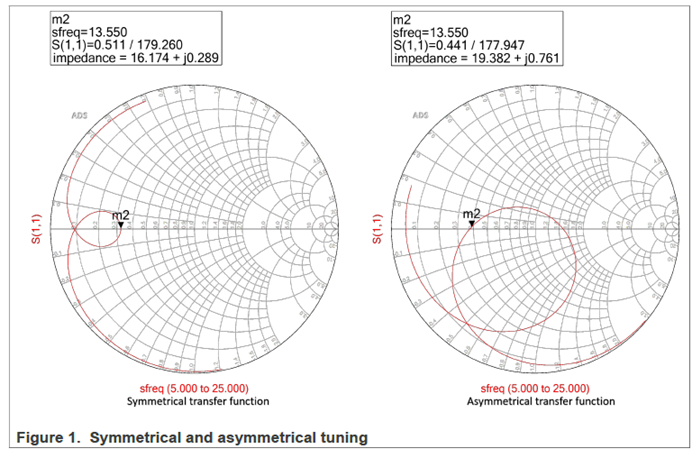What is symmetrical tuning and asymmetrical tuning
In standard antenna designs, we use cutoff frequencies up to 22 MHz to provide correct detuning and loading behavior of the antenna. This high cutoff frequency helps meet the minimum and maximum field strength limitations of common antennas without the need for dynamic power control (DPC).
It also keeps the ITVDD current below the maximum limit. In this case, we are talking about asymmetric adjustment. Once the cutoff frequency is changed to 14.4 MHz -14.7 MHz. Impedance change to "symmetrical" impedance -> symmetrical tuning. Attuned to "Symmetry"
A related issue is loading and detuning behavior. While in the case of detuned and asymmetric tuning, the impedance will increase under load conditions, the impedance in the case of "symmetrical" tuning will always decrease. Without any specific control of the output power, reducing
The impedance will increase the drive current. Therefore, the field strength may easily exceed the tolerable limits, i.e., it may exceed the IC specification of the driver current ITVDD and may exceed the field strength limit.
Dynamic power control must therefore be used to compensate for the reduced impedance and automatically reduce the drive current
Figure 1. Symmetric and asymmetric tuning

Asymmetrical tuning:
In the Detune state, the load is relatively stable, and the impedance will increase and the load current will decrease.
Cutoff frequency ≈ 20 MHz - 22 MHz
No need to use DPC function
May reduce operating volume
Typically lower output power (due to higher target impedance, typically 20-25 Ω)
Symmetrical tuning:
In the Detune state, the load decreases and the antenna current increases, which must be compensated by DPC.
More sensitive to detune state load → load reduction in detune state
Cutoff frequency ≈ 14.4 MHz -14.7 MHz
Requires DPC functionality
Add DPC correction process
Allows use of smaller antennas
Typically higher output power (due to lower target impedance, typically 16-17 Ω)
In conclusion :
In many cases of antenna tuning, designers must consider which antenna tuning method to use for applications based on the actual conditions of the product. For example, in the case of WLC, the Asymmetrical method is mostly used for antenna design. In mobile phones, the Asymmetrical method is often used for antenna design. In applications, Symmetrical is mostly used for design. The focus of consideration is nothing more than application and design suitable for FW. Therefore, designers must know more about these designs to understand the design method suitable for the product.
